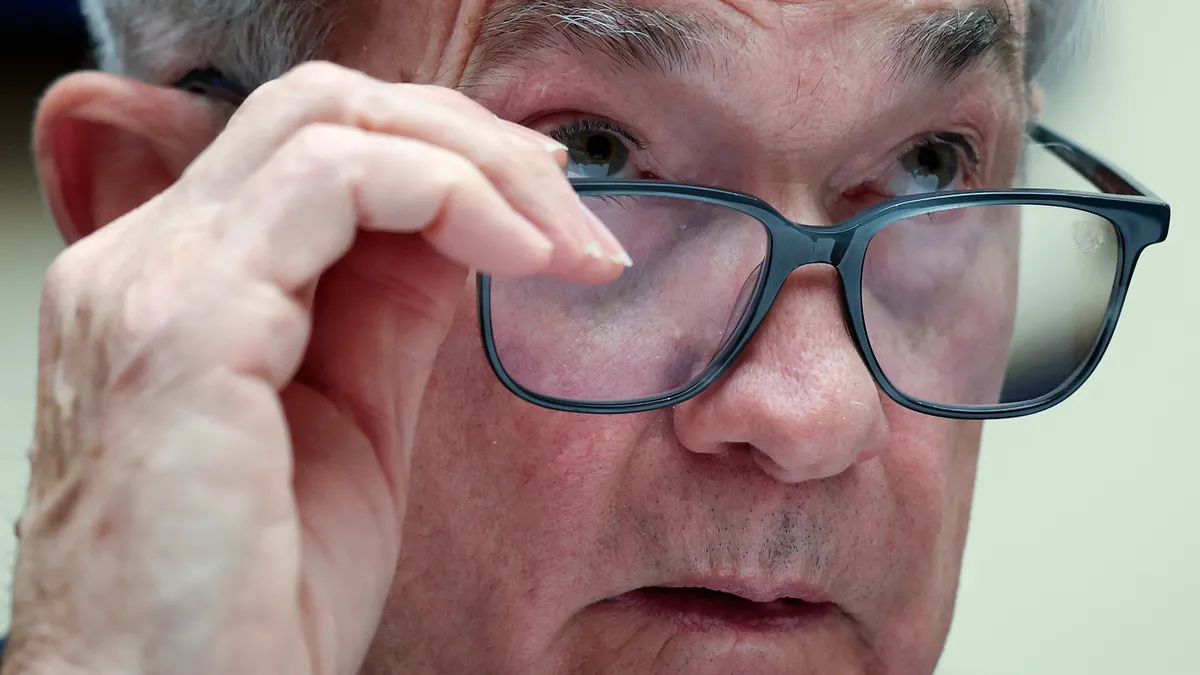Dive Brief:
-
The Federal Reserve on Wednesday held the benchmark interest rate at a 22-year high ranging from 5.25% to 5.5% while affirming its pledge to quash inflation and signaling that a quarter point hike is possible as early as its next meeting in November.
-
“We’re prepared to raise rates further if appropriate, and we intend to hold policy at a restricted level until we’re confident that inflation is moving down sustainably toward our objective” of 2%, Fed Chair Jerome Powell said in a press conference, noting that price pressures have eased since June. “The worst thing we can do is fail to restore price stability.”
- The central bank will likely increase the federal funds rate to 5.6% by December before trimming it to 5.1% by the end of next year, a half point higher than a 4.6% estimate in June, according to median projections by Fed officials released Wednesday. Policymakers have chosen to keep the main rate unchanged at two of six meetings this year.
Dive Insight:
The Fed, while gaining ground in recent months, still has far to go to push down inflation to its target.
The central bank’s preferred inflation gauge — the core personal consumption expenditures price index excluding volatile food and energy — slowed in July to 4.2% on an annual basis from a peak of 5.4% in February 2022.
Core PCE will probably fall to 3.7% by the end of this year and to 2.6% by the end of 2024, according to Fed officials’ median estimate released Wednesday.
“The process of getting inflation down to 2% has a long way to go,” Powell said, noting that Fed officials now forecast that the federal funds rate will remain higher for longer than they did in June.
For example, officials currently forecast that the Fed will trim the main rate to 3.9% by the end of 2025. In June, they estimated that the central bank by that time would cut the rate to 3.4%.
The Fed seeks to achieve a “soft landing,” raising rates sufficiently to bring down inflation and slow economic growth without triggering a recession, Powell said.
Such an outcome is plausible but far from certain, he said. “Over time, you know, the risks become more two-sided, and the risk of over-tightening and the risk of under-tightening becomes more equal.”
Fed predictions for a longer period of higher rates follow data in recent months showing that the economy and labor market have exceeded expectations, complicating central bank efforts to reduce price pressures.
The job market has cooled but is still robust, with the 3.8% unemployment rate in August close to a historic low. Fed officials estimate the jobless rate will end this year at 3.8% and 2024 at 4.1%, improvements from their June projections of 4.1% and 4.5%, respectively.
Gross domestic product will probably grow 2.1% this year and 1.5% in 2024, according to the median estimates by Fed officials. In June they forecast just 1% expansion for 2023 and 1.1% growth for next year.
“It’s fair to say that the economy has been stronger than many expected, given what’s been happening with interest rates,” Powell said.
Powell ascribed unexpectedly high growth to robust household consumption.
“We’re looking at GDP very, very carefully to try to understand, really, what’s the direction of it, what’s driving it, and it’s a lot of consumer spending,” he said.
Powell flagged several risks to economic growth, including an oil price shock, a potential federal government shutdown, the strike by autoworkers, the resumption of student loan payments next month and higher long-term interest rates.
“What we try to do is assess all of them and handicap all of them,” he said. “Ultimately, though, there’s so much uncertainty around these things.”















